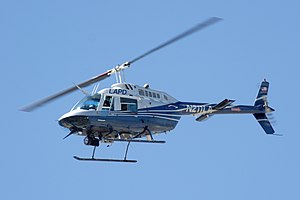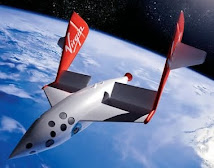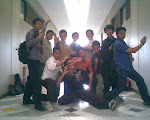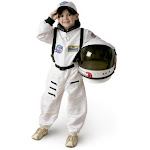Indonesian Space Force Command
Komando
Komando
Untuk Keamanan Luar Angkasa
Dari Angkatan Antariksa Indonesia
“I am prepared to die, but there is no cause for which I am prepared to kill.”
~Mahatma Gandhi~
| Helicopter | |||||||||||||||||||||||||||||||||||||||||
|---|---|---|---|---|---|---|---|---|---|---|---|---|---|---|---|---|---|---|---|---|---|---|---|---|---|---|---|---|---|---|---|---|---|---|---|---|---|---|---|---|---|
| An LAPD Bell 206 | |||||||||||||||||||||||||||||||||||||||||
|
|||||||||||||||||||||||||||||||||||||||||
A helicopter is a type of rotorcraft in which lift and thrust are supplied by one or more engine driven rotors. In contrast with fixed-wing aircraft, this allows the helicopter to take off and land vertically, to hover, and to fly forwards, backwards, and laterally. These attributes allow helicopters to be used in congested or isolated areas where fixed-wing aircraft would not be able to take off or land. The capability to efficiently hover for extended periods of time allows a helicopter to accomplish tasks that fixed-wing aircraft and other forms of vertical takeoff and landing aircraft cannot perform.
Uses
Due to the operating characteristics of the helicopter—its ability to takeoff and land vertically, and to hover for extended periods of time, as well as the aircraft's handling properties under low airspeed conditions—it has been chosen to conduct tasks that were previously not possible with other aircraft, or were time- or work-intensive to accomplish on the ground. Today, helicopter uses include transportation, construction, firefighting, search and rescue, and military uses.
In 1906, two French brothers, Jacques and Louis Breguet, began experimenting with airfoils for helicopters and in 1907, those experiments resulted in the Gyroplane No.1. Although there is some uncertainty about the dates, sometime between 14 August and 29 September 1907, the Gyroplane No. 1 lifted its pilot up into the air about two feet (0.6 m) for a minute.[5] However, the Gyroplane No. 1 proved to be extremely unsteady and required a man at each corner of the airframe to hold it steady. For this reason, the flights of the Gyroplane No. 1 are considered to be the first manned flight of a helicopter, but not a free or untethered flight.
That same year, fellow French inventor Paul Cornu designed and built a Cornu helicopter that used two 20-foot (6 m) counter-rotating rotors driven by a 24-hp (18-kW) Antoinette engine. On 13 November 1907, it lifted its inventor to 1 foot (0.3 m) and remained aloft for 20 seconds. Even though this flight did not surpass the flight of the Gyroplane No. 1, it was reported to be the first truly free flight with a pilot.[n 1] Cornu's helicopter would complete a few more flights and achieve a height of nearly 6.5 feet (2 m), but it proved to be unstable and was abandoned.[5]
The Danish inventor Jacob Ellehammer built the Ellehammer helicopter in 1912. It consisted of a frame equipped with two contra-rotating discs, each of which was fitted with six vanes around its circumference. After a number of indoor tests, the aircraft was demonstrated outdoors and made a number of free take-offs. Experiments with the helicopter continued until September 1916, when it tipped over during take-off, destroying its rotors.[18]
First flights
In 1906, two French brothers, Jacques and Louis Breguet, began experimenting with airfoils for helicopters and in 1907, those experiments resulted in the Gyroplane No.1. Although there is some uncertainty about the dates, sometime between 14 August and 29 September 1907, the Gyroplane No. 1 lifted its pilot up into the air about two feet (0.6 m) for a minute.[5] However, the Gyroplane No. 1 proved to be extremely unsteady and required a man at each corner of the airframe to hold it steady. For this reason, the flights of the Gyroplane No. 1 are considered to be the first manned flight of a helicopter, but not a free or untethered flight.
That same year, fellow French inventor Paul Cornu designed and built a Cornu helicopter that used two 20-foot (6 m) counter-rotating rotors driven by a 24-hp (18-kW) Antoinette engine. On 13 November 1907, it lifted its inventor to 1 foot (0.3 m) and remained aloft for 20 seconds. Even though this flight did not surpass the flight of the Gyroplane No. 1, it was reported to be the first truly free flight with a pilot.[n 1] Cornu's helicopter would complete a few more flights and achieve a height of nearly 6.5 feet (2 m), but it proved to be unstable and was abandoned.[5]
The Danish inventor Jacob Ellehammer built the Ellehammer helicopter in 1912. It consisted of a frame equipped with two contra-rotating discs, each of which was fitted with six vanes around its circumference. After a number of indoor tests, the aircraft was demonstrated outdoors and made a number of free take-offs. Experiments with the helicopter continued until September 1916, when it tipped over during take-off, destroying its rotors.[18]
Early development
In the early 1920s, Argentine Raúl Pateras Pescara, while working in Europe, demonstrated one of the first successful applications of cyclic pitch.[5]
Coaxial, contra-rotating, biplane rotors could be warped to cyclically
increase and decrease the lift they produced. The rotor hub could also
be tilted forward a few degrees, allowing the aircraft to move forward
without a separate propeller to push or pull it. Pescara was also able
to demonstrate the principle of autorotation,
by which helicopters safely land after engine failure. By January 1924,
Pescara's helicopter No. 3 could fly for up to ten minutes.[19]
One of Pescara's contemporaries, Frenchman Etienne Oehmichen, set the first helicopter world record recognized by the Fédération Aéronautique Internationale
(FAI) on 14 April 1924, flying his helicopter 360 meters (1,181 ft). On
18 April 1924, Pescara beat Oemichen's record, flying for a distance of
736 meters (nearly a half mile) in 4 minutes and 11 seconds (about
8 mph, 13 km/h) maintaining a height of six feet (2 m).[20]
Not to be outdone, Oehmichen reclaimed the world record on 4 May when
he flew his No. 2 machine again for a 14-minute flight covering 5,550
feet (1.05 mi, 1.69 km) while climbing to a height of 50 feet (15 m).[20] Oehmichen also set the 1 km closed-circuit record at 7 minutes 40 seconds.[5]
In the USA, George de Bothezat built the quadrotor De Bothezat helicopter for the United States Army Air Service but the Army cancelled the program in 1924, and the aircraft was scrapped.
Meanwhile, Juan de la Cierva was developing the first practical rotorcraft in Spain. In 1923, the aircraft that would become the basis for the modern helicopter rotor began to take shape in the form of an autogyro, Cierva's C.4.[21]
Cierva had discovered aerodynamic and structural deficiencies in his
early designs that could cause his autogyros to flip over after takeoff.
The flapping hinges that Cierva designed for the C.4 allowed the rotor
to develop lift equally on the left and right halves of the rotor disk. A
crash in 1927, led to the development of a drag hinge to relieve
further stress on the rotor from its flapping motion.[21] These two developments allowed for a stable rotor system, not only in a hover, but in forward flight.
Albert Gillis von Baumhauer, a Dutch aeronautical engineer, began
studying rotorcraft design in 1923. His first prototype "flew" ("hopped"
and hovered in reality) on 24 September 1925, with Dutch Army-Air arm
Captain Floris Albert van Heijst at the controls. The controls that
Captain van Heijst used were Von Baumhauer's inventions, the cyclic and collective.
Patents were granted to von Baumhauer for his cyclic and collective
controls by the British ministry of aviation on 31 January 1927, under
patent number 265,272.
In 1928, Hungarian aviation engineer Oszkár Asbóth
constructed a helicopter prototype that took off and landed at least
182 times, with a maximum single flight duration of 53 minutes.[22][23]
In 1930, the Italian engineer Corradino D'Ascanio
built his D'AT3, a coaxial helicopter. His relatively large machine had
two, two-bladed, counter-rotating rotors. Control was achieved by using
auxiliary wings or servo-tabs on the trailing edges of the blades,[24]
a concept that was later adopted by other helicopter designers,
including Bleeker and Kaman. Three small propellers mounted to the
airframe were used for additional pitch, roll, and yaw control. The
D'AT3 held modest FAI speed and altitude records for the time, including
altitude (18 m or 59 ft), duration (8 minutes 45 seconds) and distance
flown (1,078 m or 3,540 ft).[24]
- Sikorsky S-64 Skycrane lifting a prefab house
- Kern County (California) Fire Department Bell 205 dropping water on fire
- A British Westland WAH-64 Apache attack helicopter
- HH-65 Dolphin demonstrating hoist rescue capability
- A Sikorsky S-76C+ air ambulance being loaded by firefighters
-
External links
- Organizations
- AHS International - The Vertical Flight Technical Society
- Helicopter Association International
- Helicopter Links - companies, organizations, museums, trade/air shows
- Articles
- "Planes That Go Straight Up." 1935 article about early development and research into helicopters
- "Flights — of the Imagination." 1918 article on helicopter design concepts.
- "Twin Windmill Blades Fly Wingless Ship" Popular Mechanics, April 1936
- "Engine-off Landings -First Thorough Examination of an Aspect of Helicopter Flight Hitherto Somewhat Neglected" 1947 article on physics of unpowered landing
- The Helicopter 1953 video about uses and flight physics of helicopters. Prelinger Archives at the Internet Archive.
- Information



























